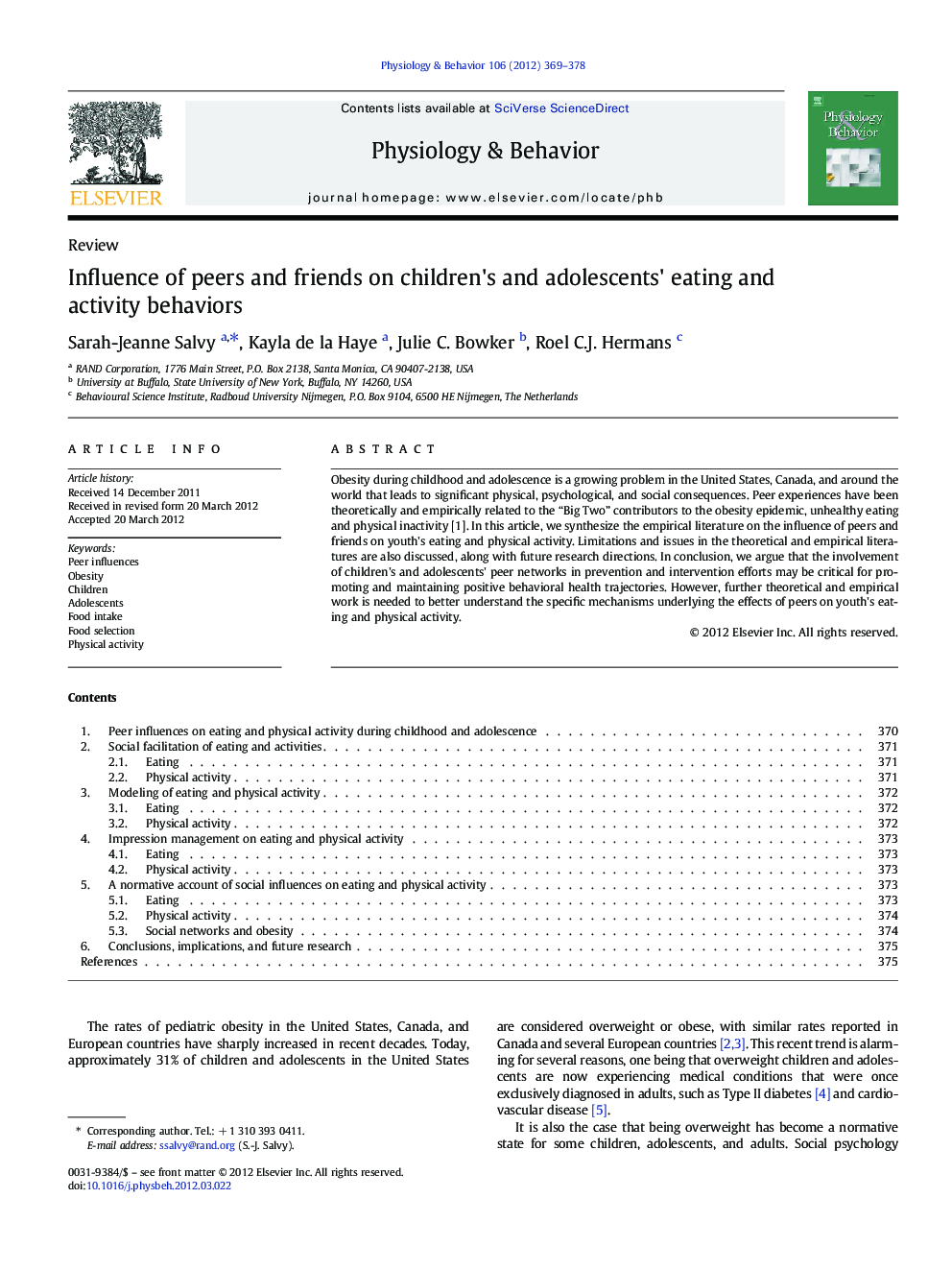| Article ID | Journal | Published Year | Pages | File Type |
|---|---|---|---|---|
| 5925036 | Physiology & Behavior | 2012 | 10 Pages |
Obesity during childhood and adolescence is a growing problem in the United States, Canada, and around the world that leads to significant physical, psychological, and social consequences. Peer experiences have been theoretically and empirically related to the “Big Two” contributors to the obesity epidemic, unhealthy eating and physical inactivity [1]. In this article, we synthesize the empirical literature on the influence of peers and friends on youth's eating and physical activity. Limitations and issues in the theoretical and empirical literatures are also discussed, along with future research directions. In conclusion, we argue that the involvement of children's and adolescents' peer networks in prevention and intervention efforts may be critical for promoting and maintaining positive behavioral health trajectories. However, further theoretical and empirical work is needed to better understand the specific mechanisms underlying the effects of peers on youth's eating and physical activity.
⺠Dearth of theoretical work on social determinants of eating and activities. ⺠Peers/friends facilitate intake, except when social-evaluative concerns are high. ⺠Positive peer relationships foster involvement in physical activity. ⺠Aloneness and peer difficulties deter youth from being physically active.
